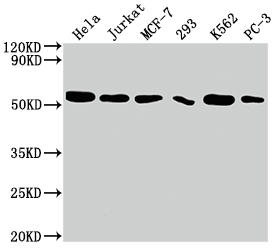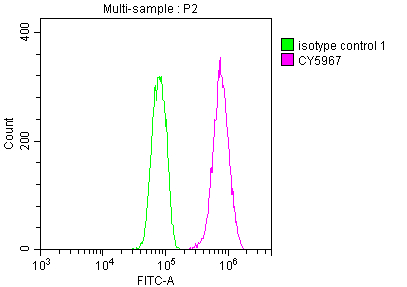The CDC37 recombinant antibody is prepared using protein and DNA recombinant technology. The process begins by immunizing mice with a synthesized peptide derived from human CDC37. After a certain period, the spleen of the mice is removed under sterile conditions, and the total RNA of spleen cells is extracted. The cDNA synthesized through RNA reverse transcription is used as a template for PCR amplification of the CDC37 antibody gene. The CDC37 antibody gene is then introduced into a vector and transfected into host cells for cultivation. The CDC37 recombinant monoclonal antibody is purified from the cell culture supernatant using affinity chromatography. This antibody is strictly verified and can be utilized for human CDC37 protein detection in ELISA, WB, and FC experiments.
The CDC37 protein is a molecular chaperone that plays a role in the folding, stability, and activation of protein kinases. CDC37 is thought to be involved in many cellular processes that rely on protein kinases, such as cell growth, differentiation, signaling, and apoptosis. Dysregulation of CDC37 or its client kinases has been associated with several diseases, including cancer, neurodegeneration, and cardiovascular disorders.







